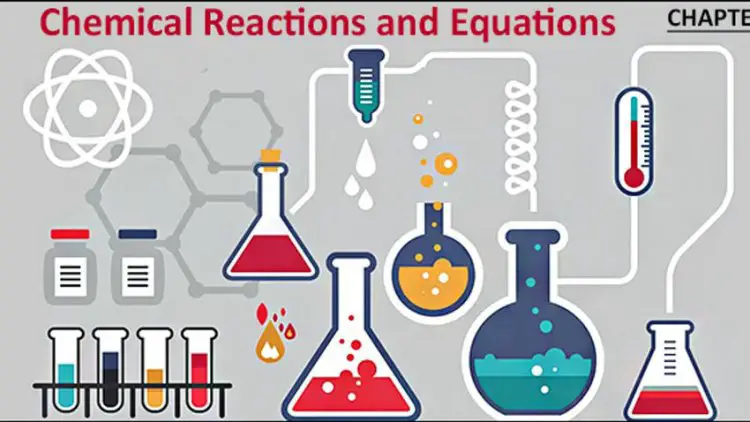Chemical Reaction And Equations
Understanding chemical reactions and equations helps us predict the outcomes of mixing different substances and is fundamental to studying chemistry.

Chemical Reactions and Equations
Chemical reactions are all around us, from the rusting of iron to the burning of a candle. But what exactly happens in these reactions? Let's explore!
Understanding Chemical Reactions:
A chemical reaction is a process where substances (called reactants) change into new substances (called products). During this change, bonds between atoms are broken and new bonds are formed. The substances we start with are different from what we end up with after the reaction.
Examples of Chemical Reactions:
-
Combustion: When we burn a piece of paper, it undergoes a chemical reaction with oxygen in the air to produce ash and smoke.
-
Rusting: When iron is exposed to moisture and oxygen, it rusts. This is also a chemical reaction where iron combines with oxygen to form iron oxide (rust).
Chemical Equations:
Chemical reactions can be represented using chemical equations. These equations show what happens to the reactants and what new substances are formed as products.
Parts of a Chemical Equation:
-
Reactants: These are the substances we start with before the reaction begins. They are written on the left side of the equation.
Example:
-
Products: These are the new substances formed after the reaction. They are written on the right side of the equation.
Example:
Balancing Equations:
Chemical equations must be balanced to follow the law of conservation of mass, which states that matter cannot be created or destroyed in a chemical reaction. This means the number of each type of atom on both sides of the equation must be equal.
Types of Chemical Reactions:
-
Combination Reaction: When two or more substances combine to form a new substance.
Example:
-
Decomposition Reaction: When a compound breaks down into simpler substances.
Example:
-
Replacement Reaction: When atoms of one element replace atoms of another element in a compound.
Example:
Conclusion:
Chemical reactions and equations are fundamental to understanding how substances interact and change. By studying them, we can explain many natural phenomena and create new materials for various purposes. Remember, every chemical reaction involves a transformation, where old bonds break and new bonds form, leading to different substances than we started with.
What's Your Reaction?





















